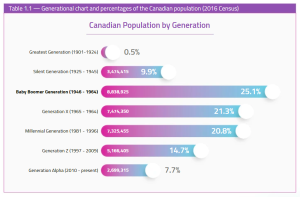Neuroaesthetics & Adaptive Renovations
Neuroaesthetics and adaptive renovations are reshaping how we think about home design – especially as our population ages. The conversation is shifting from luxury and convenience to longevity and wellbeing. It’s no longer just about aging in place – it’s about thriving in place. This is where thoughtful design can support not only physical needs but also nurture the human spirit.
I recently attended a seminar featuring architect Tye Farrow, author of Constructing Health, whose work explores how our environments directly influence our health. I’ve also just completed the Canadian Home Builders’ Association’s Adaptiv Home Renovation Course. Both experiences have deepened my focus on designing homes that promote wellness at every stage of life.
How Neuroaesthetics Supports Aging at Home
Neuroaesthetics explores how our brains respond to design elements like light, color, texture, and spatial layout. For aging adults, thoughtful design can enhance memory, ease anxiety and lift mood.
- Natural light helps regulate sleep and mood
- Soft curves and open sightlines reduce confusion
- Calm, nature-inspired colors improve focus and comfort
Tye Farrow puts it best: “There is no such thing as neutral space.” Where we live influences us on every level.
The Role of Adaptive Renovations in Lifelong Living
The CHBA’s Adaptiv Home Renovation Manual outlines how to create safe, dignified, and beautiful living environments that accommodate evolving needs. When combined, neuroaesthetics and adaptive renovations offer a holistic approach to creating homes that feel good, function beautifully, and support wellness at every stage of life.
Key features include:
- Zero-step entries and wide doorways
- Curbless showers and seated vanities
- Layered lighting and better air quality
- Solutions for vision, mobility, or cognitive challenges
- Collaboration with occupational therapists and caregivers
These updates are not just practical – they’re personal. They help people feel capable and comfortable in their own homes.
Design That Heals: Where Beauty Meets Function
Adaptive homes don’t need to feel institutional. In fact, they shouldn’t. A wide hallway can feel elegant, not clinical. A bath bench can be sculptural, not sterile.
Farrow reminds us: “Architecture and design can cause health just as they have the ability to cause dis-ease.” Design isn’t just about removing obstacles – it’s about creating opportunities for comfort, joy, and dignity.
Ready to Future-Proof Your Home?
If you’re considering renovations or building a home that supports lifelong living, consider designing with neuroaesthetics and adaptability in mind. It’s a powerful way to create a home that evolves with you – and uplifts you every day.

CHBA Canadian Population by Generation Chart (2016): Adaptiv Home Renovation Manual
